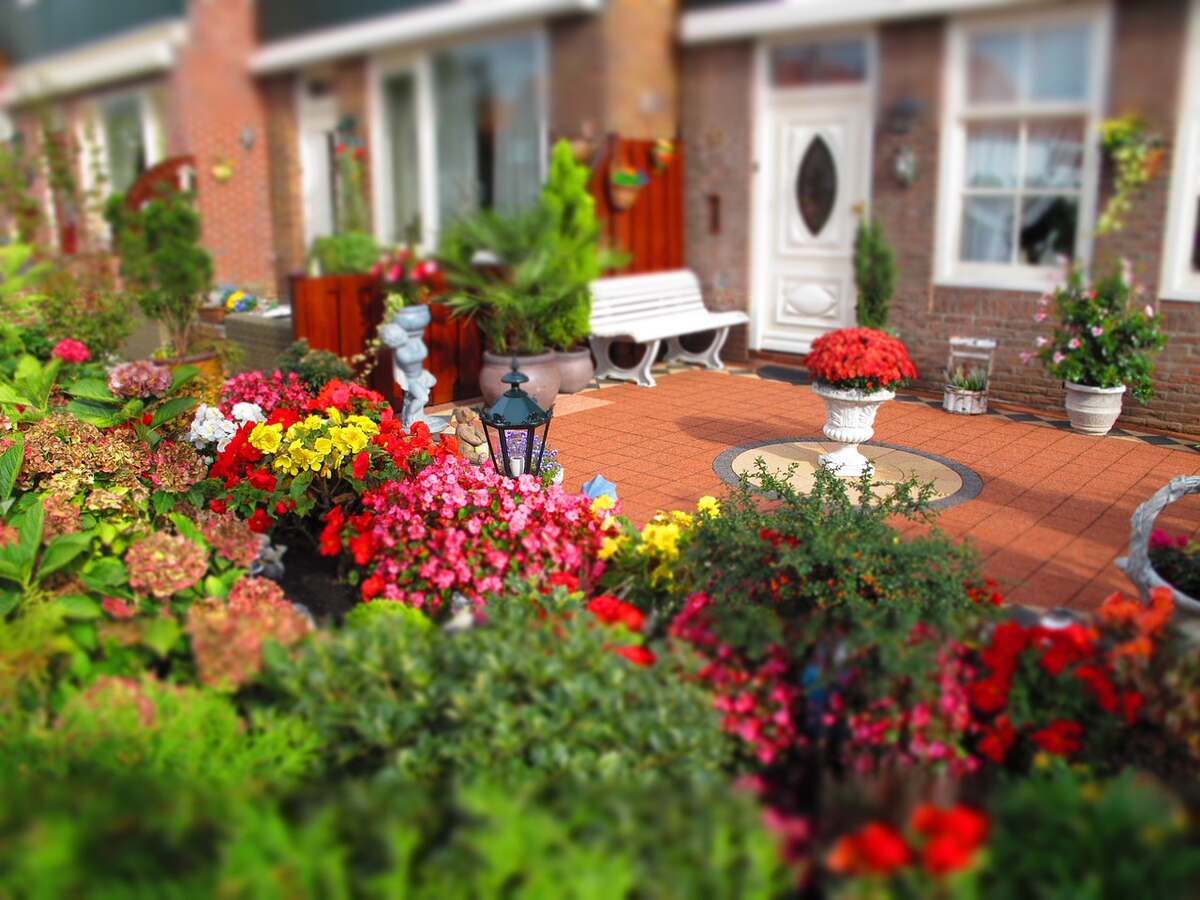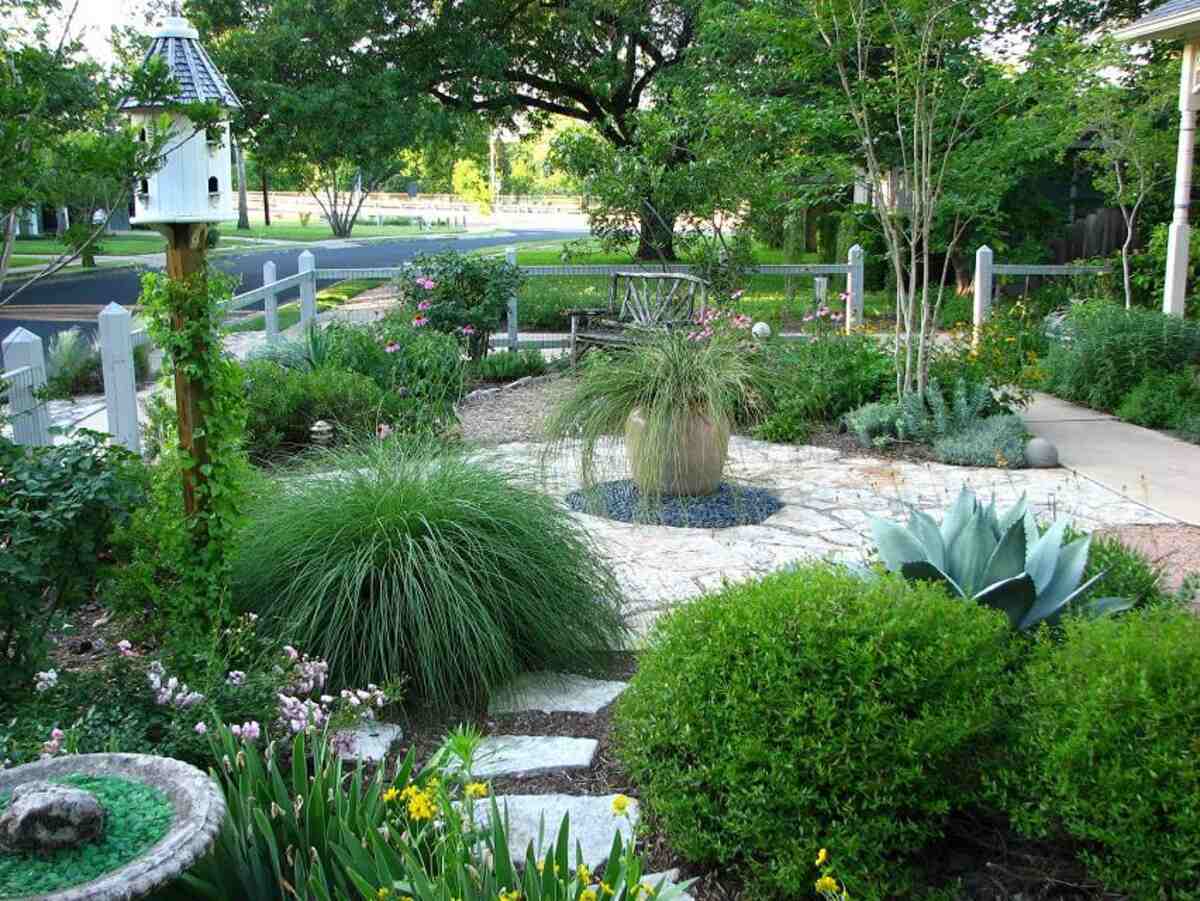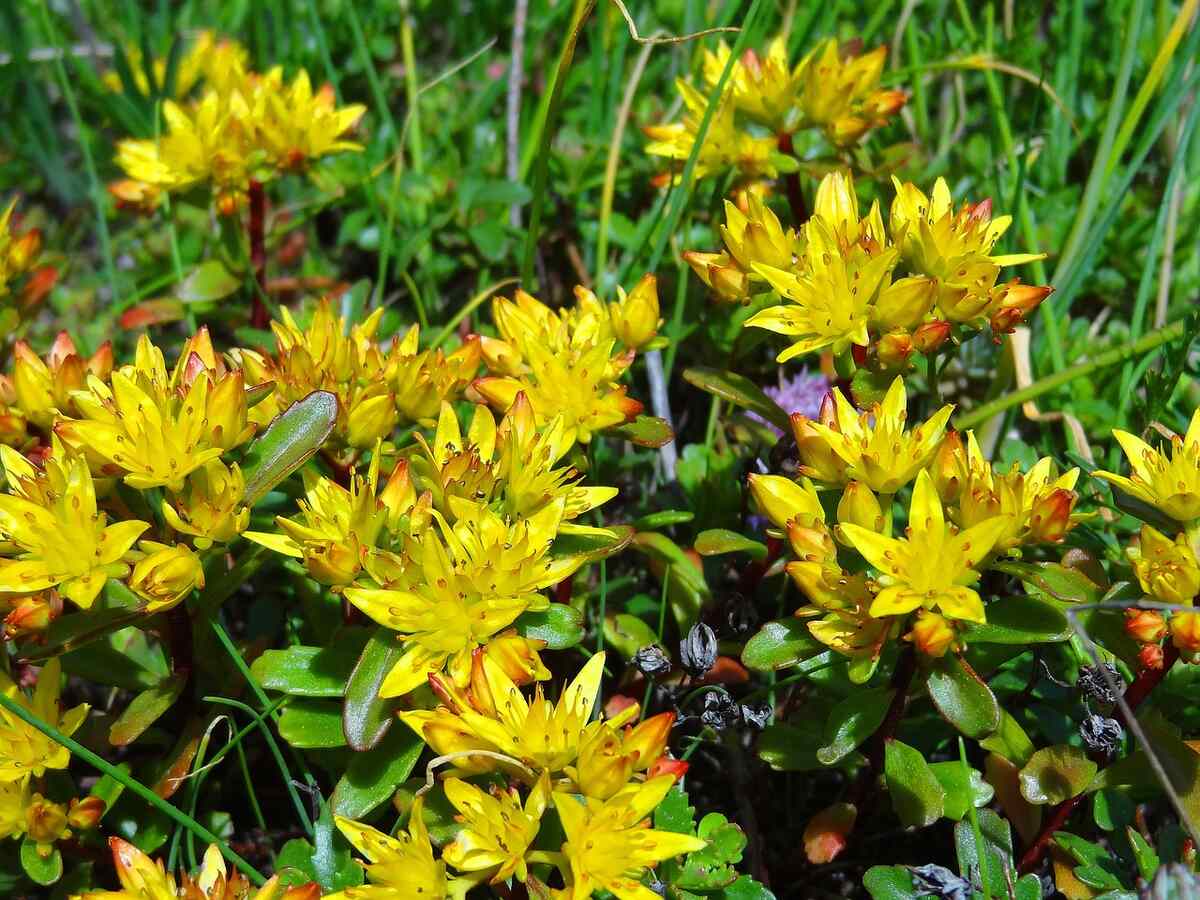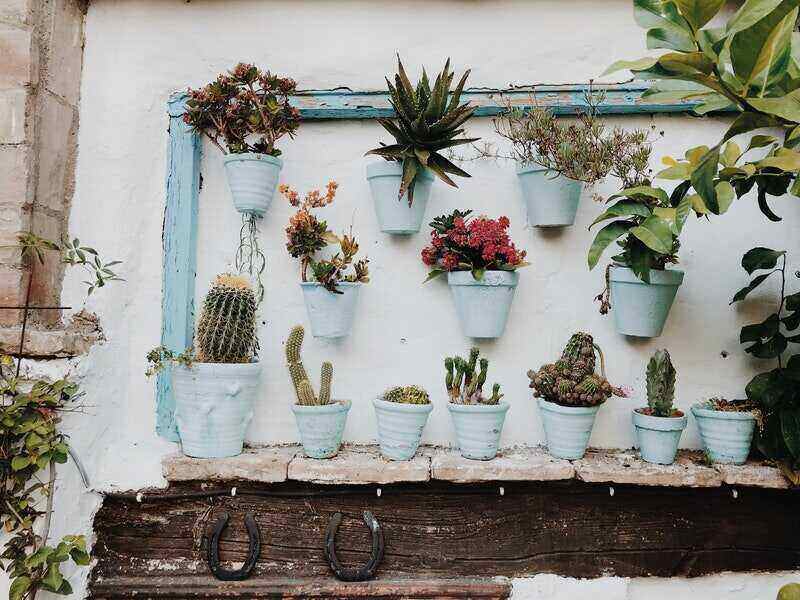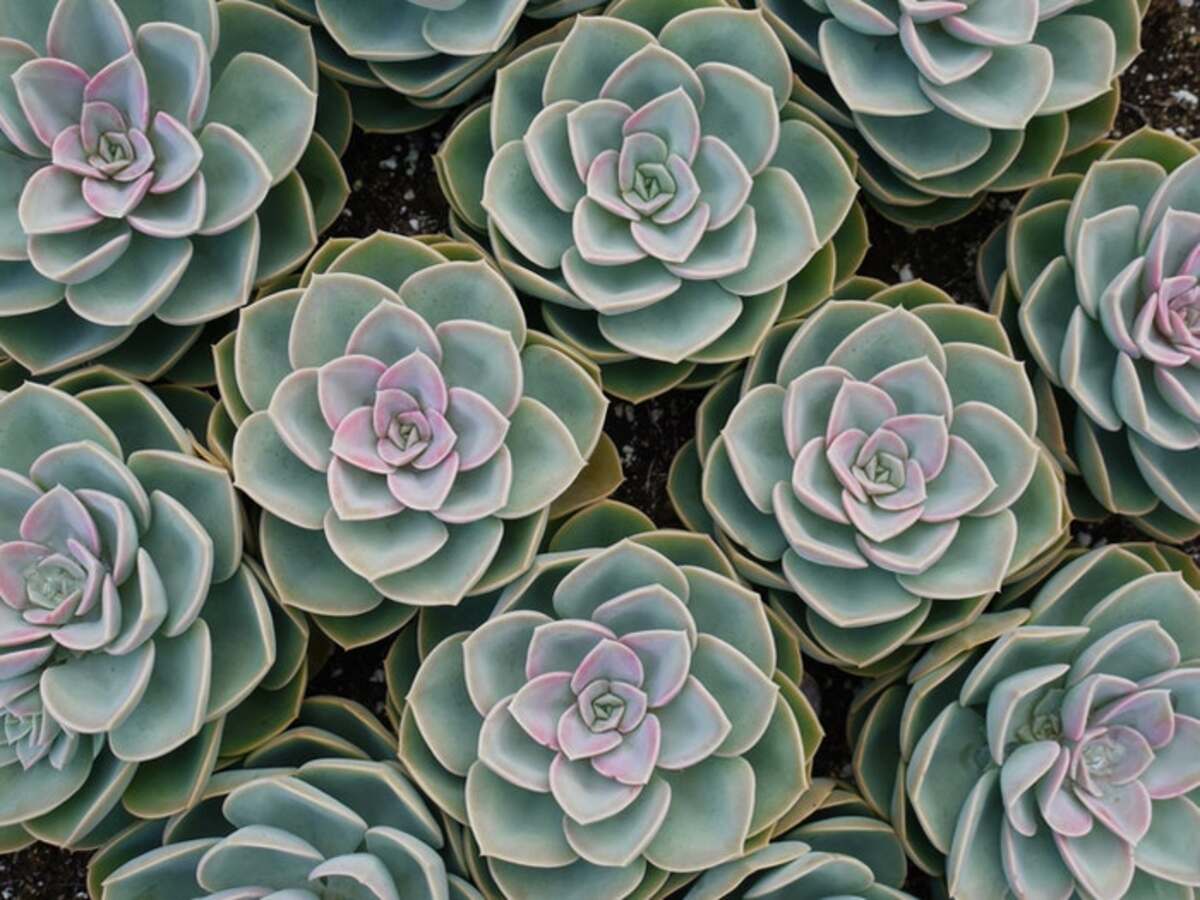
Easy, simple, and effortless landscaping doesn’t have to come at a price. Not if you know how to create a succulent garden. These water-storing plants offer your landscape some of the most diverse textures and colors found in nature, and you hardly need to lift a finger to help them grow.
Planting succulents in your front yard is as easy as keeping these drought-tolerant plants alive. After you wipe your hands of the dirt, you needn’t worry about providing constant plant care. Your succulents need only a sip of water once every week or two.
So grab your trowel, slip on your garden gloves, and slap on some sunscreen — it’s time to create your own DIY outdoor succulent garden.
What is a Succulent Garden?
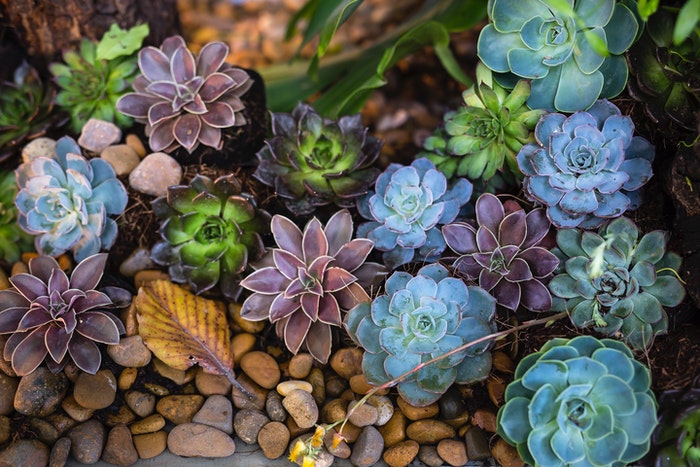
Succulents are fleshy plants that store water in their leaves and stems. They grow in various shapes, sizes, and colors, and often have beautiful spirals, frills, and rosette patterns. A few even produce breathtaking flowers with stunning color pallets.
DIY succulent gardens are low-maintenance and perfect for the first-time grower who can water the garden only every one or two weeks.
Most succulent plants tend to prefer mild climates, where the temperature doesn’t get too hot or too cold. If you live in an area with frigid winters, you may wish to grow your succulents in a container garden so you can bring them inside as house plants. But if you live in a temperate area, succulent gardens can grow well outside in your yard.
How to Create a Succulent Garden (in 7 Steps)
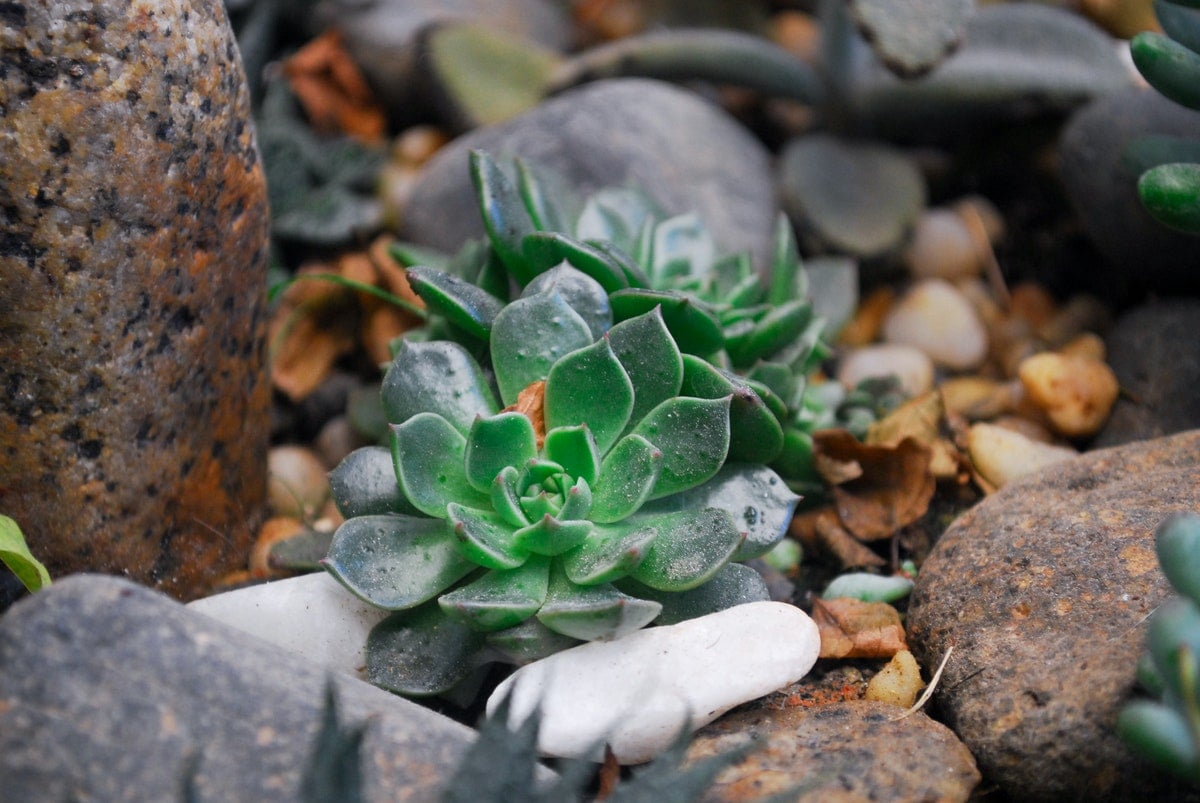
1. Gather Materials for Your Succulent Garden
So, you want to learn how to make a succulent garden because it’s low-maintenance, right? Building a DIY succulent garden is pretty simple, too, if you have the right materials.
- A garden area you can’t wait to show off.
- Your favorite succulents (but you’ll buy those later).
- A soil mix with good drainage that includes organic matter and coarse drainage material, such as sand, grit, pumice, perlite, small gravel, or crushed granite.
- A trowel for transplanting.
- Gardening gloves.
2. Know Your Plant Hardiness Zone
Some succulents cannot survive extreme temperatures. Check your plant hardiness zone to confirm which succulents will grow best in your area. Some plants will grow better in your zone than others.
Note: Some succulents are more cold-hardy than others and may be great for succulent gardening, despite freezing temperatures. Sempervivums, also known as hens and chicks, and sedums are very cold-hardy ground covers and needn’t be brought inside for winter.
3. Find the Right Spot for Your Succulent Garden
Before buying plants and getting too ahead of yourself, you need to find the perfect spot for your succulent garden. Once you know the area’s size and the amount of sunlight it will receive, you’ll have a better idea which types of succulents will grow best in the space and how many to buy.
Sun and shade requirements for various succulents will vary. Some succulents prefer shade, others require partial sun, and some need full sun.
Snake plants and jade plants can tolerate some shade, while aloe, aeoniums, and agave prefer plenty of sunlight.
4. Ensure Proper Soil Drainage
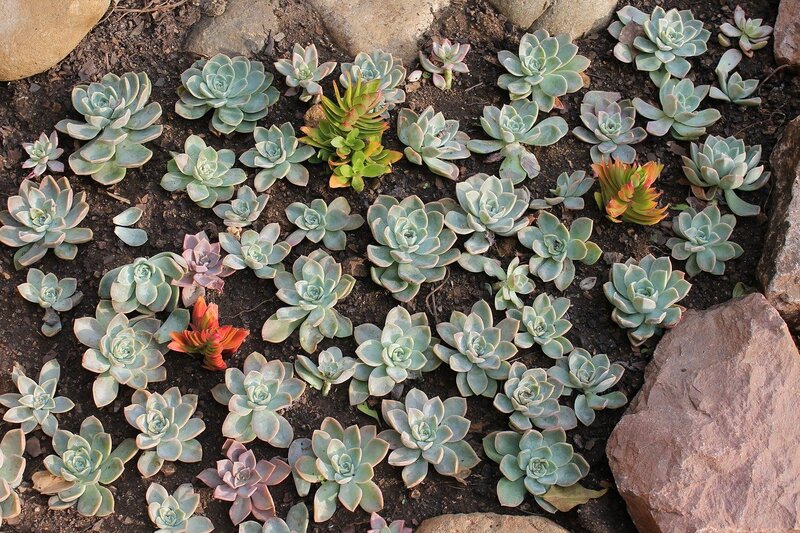
Poor drainage will force these plants to sit in moist, wet soil for too long and cause root rot. Succulents prefer well-drained, sandy soil, and can even grow in rock gardens.
Creating a soil mix with good drainage may take trial and error, and you may need to perform a few percolation tests. A good soil mix should include organic matter, such as compost, and coarse drainage material, like sand, grit, pumice, perlite, small gravel, or crushed granite.
5. Play with Succulent Arrangements
You will want to arrange your plants in the garden while they’re still in their pots. Putting them in place will help you visualize the final result and make any design changes you need.
Moving your plants around for a more pleasing look will be much easier while they’re still in their nursery pots than after replanting them.
Once you’ve got your plants in place and you’re happy with the garden design, you’re ready to move on to the next step and create your succulent garden.
6. Transplant Your Succulents
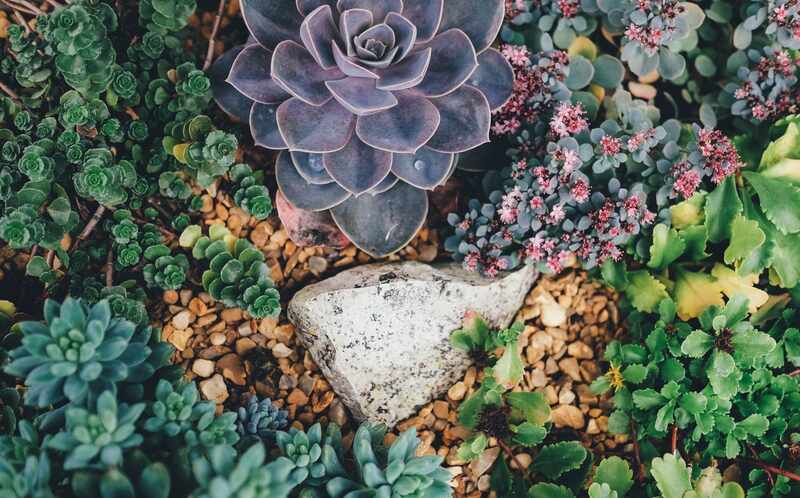
Transplanting succulents can be a bit tricky, but these plants are tough. If a few roots tear or a plant gets bumped around a bit, succulents typically recover well and settle into their new home in no time.
Gently remove your succulent from the nursery pot and tap or brush the roots to remove the soil. Sometimes the nursery potting mix doesn’t allow good drainage, and the soil may cling to the roots and prevent them from getting the water they need. If you need to cut or break some of the roots to remove the nursery potting soil, that’s OK.
If the roots are wet, let them dry for about a day before placing your succulents into the soil.
7. Watering and Caring for Your Succulents
Wait a day or two before watering your succulent garden, as the roots need time to heal and adjust.
Only water when the soil is completely dry. Check the first couple of inches of soil. If it’s moist, skip the watering. But if the soil is dry, water deeply and then let the soil dry out before the next watering. Water your succulent garden once every week or two.
Keeping your plants in moist soil makes them susceptible to root rot. It’s better to underwater than overwater, as it is much easier for them to recover from dryness than root rot.
Pro tip: Check the leaves. An overwatered succulent’s leaves will typically appear soft, mushy, and translucent. An underwatered succulent’s leaves will look shriveled or wrinkled.
Tips For Maintaining Your Succulent Garden
Succulent gardens may be low-maintenance, but they aren’t problem-free. Here are a few troubleshooting tips to help you keep your succulent garden in top shape.
How to Get Rid of Mealybugs On Your Succulents
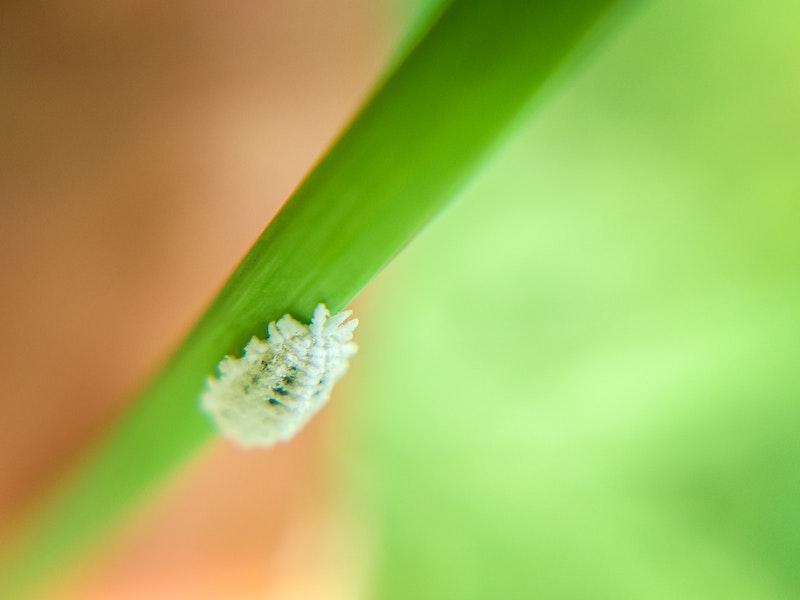
Mealybugs love to infest succulents. They spread from plant to plant and hide under the succulent leaves in a web-like substance. These pests will suck the juices from your plants and cause the leaves to stunt or yellow. The best way to get rid of mealybugs is to attack these pests as soon as you spot them. Regularly inspect joints, crevices, and under the leaves.
The Division of Agriculture and Natural Resources at the University of California recommends performing a spot treatment with isopropyl alcohol. Using a 70% solution of isopropyl alcohol (also known as rubbing alcohol) in water, dab the solution onto the mealybugs with a cotton swab.
Test the solution on a small area one to two days beforehand to ensure the solution does not harm the plant. If the infestation is severe, apply a 10% to 25% solution of isopropyl alcohol with a spray bottle every week until the infestation is gone.
Can I Save A Dying Succulent?
Succulents are hardy plants and can bounce back quickly from an upset if given proper care. The leaves will signal you when there is trouble.
- Mealybugs: If you see a web-like substance under the leaves and the leaves turn yellow, then mealybugs are likely the problem.
- Overwatered: If the stem or the leaves are mushy, then your plant is most likely overwatered. Test the soil. If it’s super wet, this may be a sign the drainage isn’t up to par. Carefully move your plant to a different area in the garden with well-drained soil or into a new succulent container with drainage holes.
- Underwatered: If the leaves are wrinkly, your dying succulent is likely in need of some water. Give it a nice drink of water, and it will revive quickly.
- Normal growth: If you’re noticing dying leaves at the plant’s base, there’s little need to worry. Dying or falling leaves are normal as the plant grows.
How Can I Tell If My Succulent Is Sunburned?
Many succulents need a fair amount of sunlight, but blasting sunlight and high temperatures can do quite a number on your succulent garden.
If your succulent begins to develop white, brown, black, or beige patches across the leaf, it may be sunburned. Consider moving it to an area where it can receive more shade and get a break from the sun.
FAQ
Which Succulents Are Suitable for Temperatures Above 50 F?
Soft succulents thrive in warmer climates with temperatures that never drop below freezing, ideally above 50 degrees Fahrenheit. If these plants are exposed to temperatures below freezing, the water stored in their leaves will freeze and cause the plant to die.
Here are a few warm-loving soft succulents:
- Kalanchoe (Kalanchoe bracteata)
- Aloe vera (Aloe barbadensis)
- Christmas cactus (Schlumbergera bridgesii)
- Haworthia (Haworthia sp.)
- Jade Plant (Crassula ovata)
- Mexican hens and chicks (Echeveria elegans)
- String of pearls (Senecio rowleyanus)
Note: These also make great houseplants.
Which Frost-Hardy Succulents Can I Plant in the Garden?
These tough plants can tolerate temperatures between 40 and -20 degrees Fahrenheit. They can handle frigid winters, but their roots don’t like damp/moist soil. Remember, most winters across the continental U.S. will not just be dry, they will be wet and snowy as well.
Here are some frost-hardy succulents for your outdoor garden:
- Hens and chicks (Sempervivum tectorum)
- Stonecrop (Sedum sp.)
- Hardy yellow ice plant (Delosperma nubigenum)
Why Is My Succulent Stretched Out?
Succulents begin to stretch out when they are in too much shade and aren’t getting enough sunlight. They will start to grow toward the available light and will stretch as they do so.
In some cases, succulents will grow taller and more space will develop between the once compacted leaves. If you notice your succulents beginning to stretch, move them closer to the light source.
When to Call a Landscaping Professional
Don’t worry if you don’t have a green thumb or design skills! A landscaping professional can take your front yard succulent garden ideas and bring them to life – from the initial design of your outdoor succulent garden to the installation.
And if you need assistance with routine maintenance, such as succulent care, watering, or seasonal gardening treatments, help is just one call away.
Main photo credit: Rie Sadohara / Pexels
